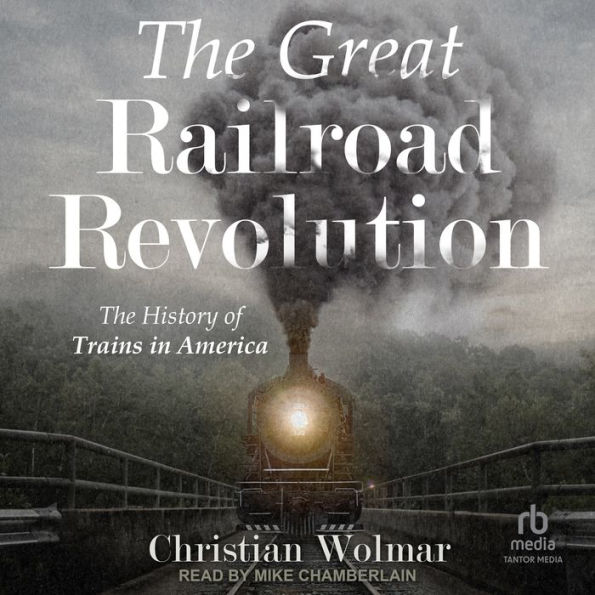The Great Railroad Revolution succeeds in showing how, ‘without the railroads, the United States would not have become the United States.’”—Wall Street Journal
“Christian Wolmar is in love with railways. He writes constantly and passionately about them. He is their wisest, most detailed historian and a constant prophet of their rebirth. So America, from 1830 on, from a few, tentative miles of track to a quarter of a million miles only 80 years later, is a story that grips his imagination… the tangle of failure, frailty and faint-heartedness he unpicks here goes far beyond mere romance: it resonates and crosses borders of national experience; it tells us something vital about the nature of railways we still struggle to learn to this day… If you love the hum of the wheels and of history, then Christian Wolmar is your man.”—Guardian
“In his new book, his ninth, a comprehensive, compulsive and compelling epic story of the American railroad, Christian Wolmar reveals how that revolution actually fuelled the nation’s rise to a world-status power with its new found ability to glue itself together into a cohesive economic force…. Wolmar’s magnificent saga tells graphically how it all happened, then collapsed as man’s love affair with trains transferred first to cars, then to airplanes and possibly next lock on to rockets into space….What is outstanding in his fascinating research is the detail, an encyclopedia of railway lore, myth and anecdote that could – and has – sustained many a film, TV series and novel.”—Camden New Journal (UK)
“In a volume that will delight train buffs—and hopefully others—English historian and railway expert Wolmar… examines the rise and fall of railroads in America, with a detailed look at how they influenced and directed the growth of the country for more than a century. …The end result is a fascinating, even indispensable look at one of America’s essential historical components."—Publishers Weekly
“This is the ninth book that Wolmar has written about trains of various kinds. It is certainly among the best, incorporating, alongside some gripping and downright bizarre reports upon a century-long stretch of vastly improved transport and soaring economic growth… an account of the ‘sheer, almost unbelievable scale of corruption and graft’ from which brutal opportunists like Huntington, Stanford and Gould minted their undeserved millions... Enjoyably anecdotal.”—Daily Telegraph (UK)
"A passionate and masterly history."
—Sunday Times (UK)“Readers… get to take a broad voyage through railroad vs. railroad battles (even including espionage), the Civil War (in which trains were crucial), and the ultimate decline of trains.”—Christian Science Monitor
“As he did for global railroad history in his Blood, Iron, and Gold, Wolmar masterfully condenses the history of American rail into a lively and lucid work that is highly recommended to all.”—Library Journal (Starred review)
"Wolmar clearly wishes the railroads had remained more of a social, economic and transportation force in the United States. His fine book will likely make many feel the same way.”—Washington Independent Review of Books
“Wolmar’s sweeping history of railroads in America is rich in drama…. He makes a good case that the rail system helped create not only America’s economy but its character.”—New Yorker
“Above it all is the pioneering vision that grips the reader. Wolmar is so passionate about his subject that one cannot help but be swept along. Certainly there was romance and great adventure, but this is also a story of danger as each section was laid across trestled bridge and wilderness.”—Oxford Times
“Wolmar, it seems, has no purpose other than crafting a critical but admiring study of a triumph of engineering, and in this he has succeeded. A solid and, yes, concise look at the railroad’s past, with a rousing call at the end for a new and improved rail system to carry the nation forward.”—Kirkus Reviews
“Wolmar is clearly in love with his subject—it’s easy to imagine him as a sort of walking encyclopedia of railroad lore—and his enthusiasm for his material shines through on every page. He finds the decline and increasing irrelevance of the railroad—especially the passenger rails—a deeply saddening aspect of contemporary life, and he makes a convincing case that, in losing rail travel as a fundamental human experience, we’ve lost a hugely important part of ourselves and our history.”—Booklist
“Without the railroads, Wolmar contends, there would have been no United States.… The really interesting suggestion is that robber barons are a necessary evil, the drivers stoking the engine of American capitalism.”—Australian Financial Review



